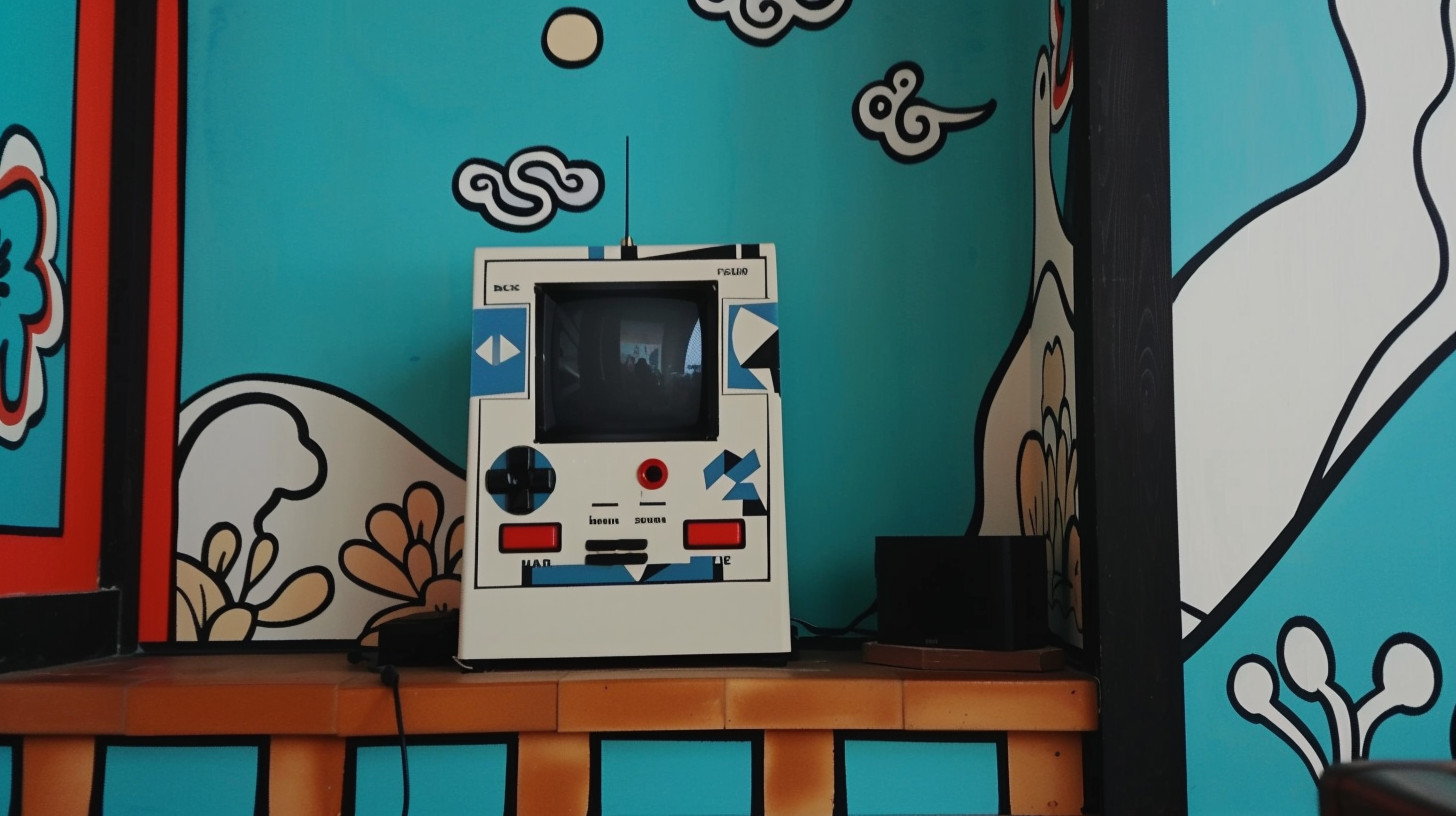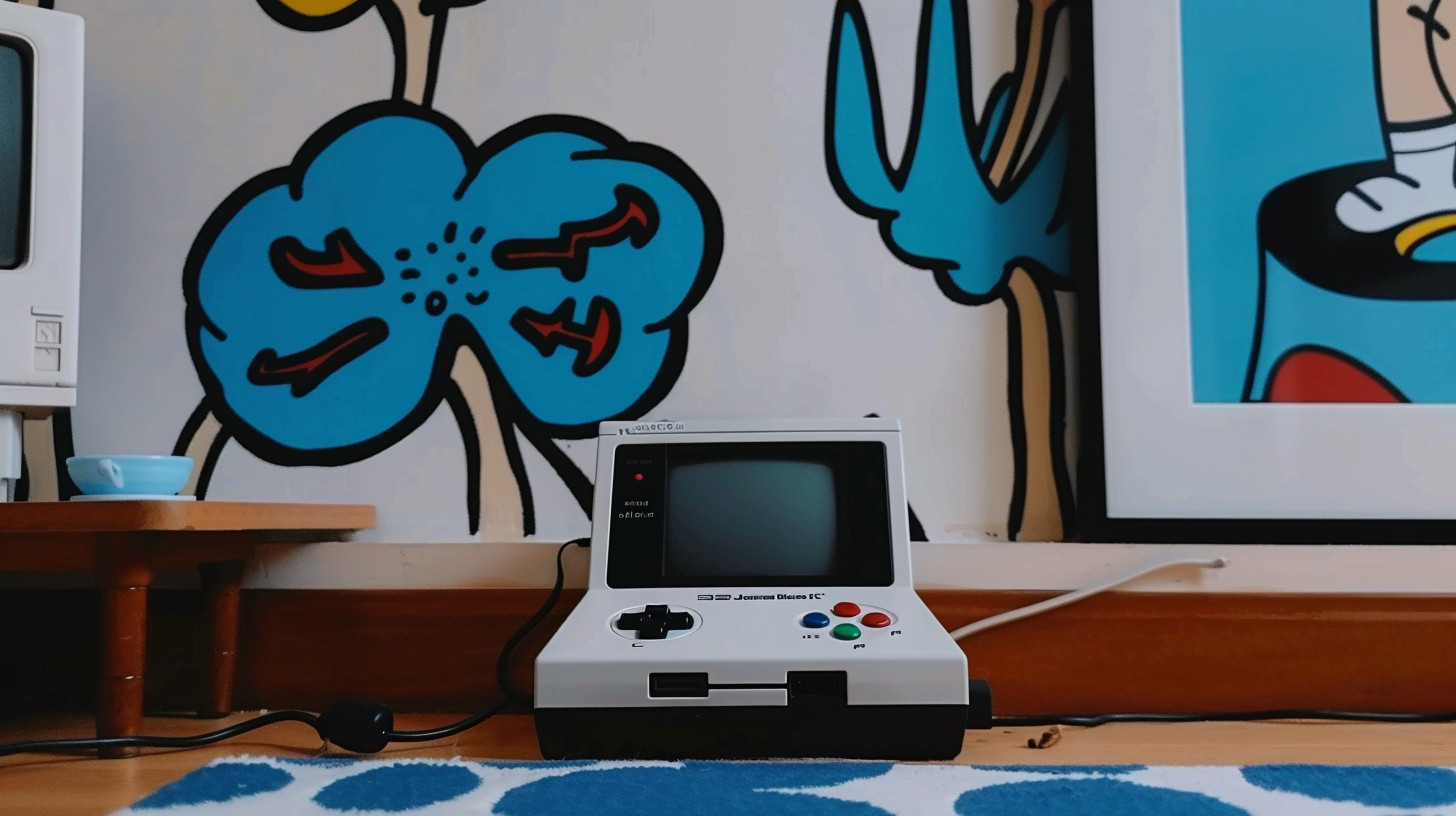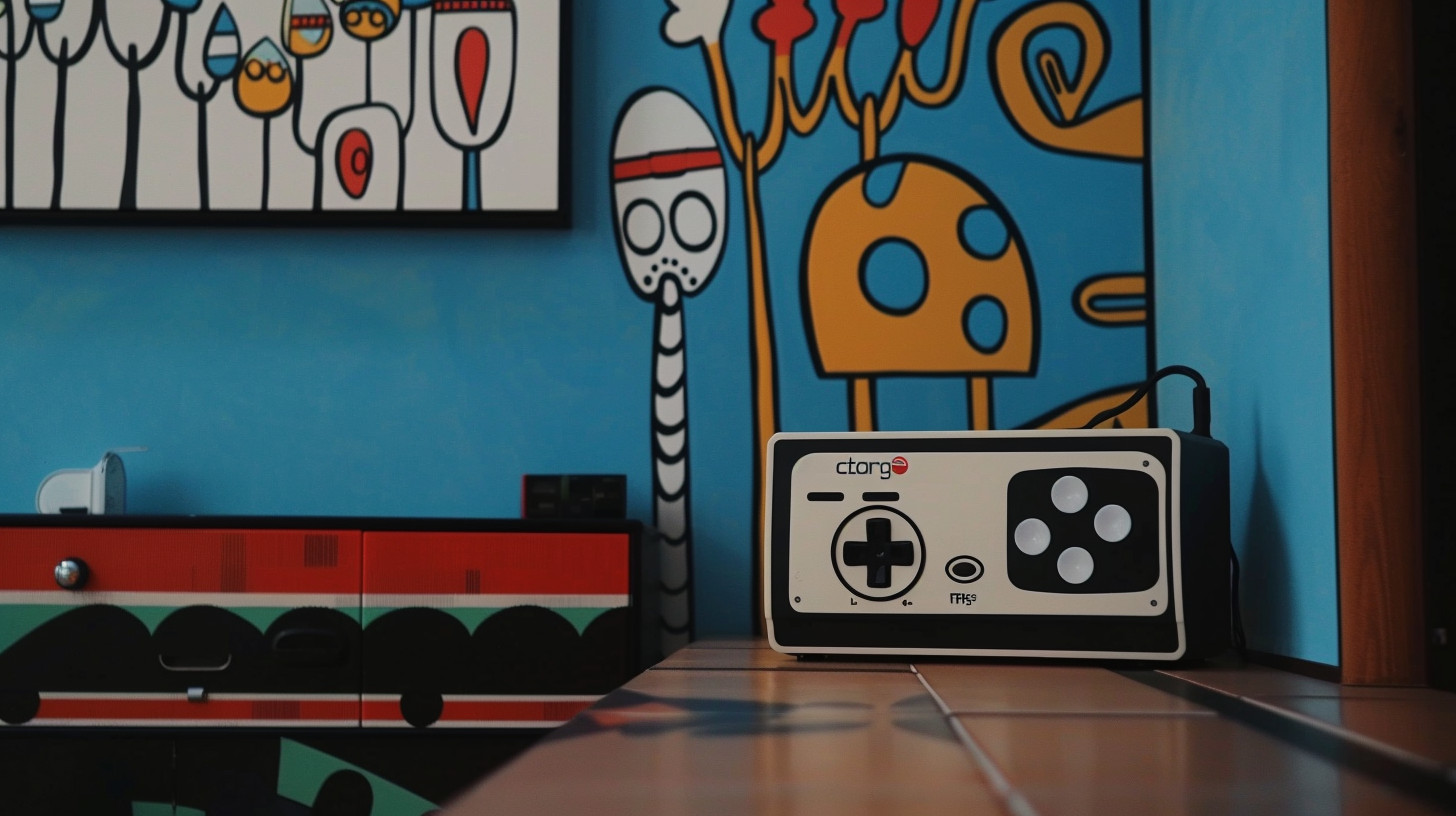As I contemplate in my game room, I am surrounded by a combination of new and old gaming consoles. However, when I look up and see a game console on my shelf, my eyes always open wide. This special console, the Sega Dreamcast, always fills me with the greatest surprise and joy. I am overjoyed to see it on my shelf because I know that it represents one of my most cherished moments in gaming history. This console, no doubt, had a great effect on the future of the gaming industry. Even though the Sega Dreamcast’s lifespan was cut short, I know that it was never just a hardware unit on my shelf—it represents a company’s daring leap into the future of electronic entertainment.

In 1999, the world stood at the edge of a millennium, filled with anticipation and excitement. Indeed, in those pre-millennial days, fans of video games were in many ways more “jacked up” than ever before because unfounded rumors swirled about the amazing new game system that Sega was about to unleash on an unsuspecting public. Even back then, it was clear that something was not right with how the way everything was going. The first rumblings emerged in the early 1990s that games were “being designed to appeal to the pocket of the work-a-day person.” Games started to get more serious.
The Dreamcast came out on September 9, 1999, and I, for one, could not wait to get my hands on it. I remember walking into the old, unreliable shop around the corner from my house and seeing it for the first time under the display case’s flickering fluorescent lighting. What a fantastic white box of dreams! I could not wait to get the system and a couple of games out of the door, into my car, and over to my house. And could my heart beat any faster with the sheer excitement of it all? At that moment, and even for much too long afterward, I was still a believer.
For Dreamcast, history had it that unforgettable was the experience of setting it up for the very first time. The console’s downright unusual aesthetics—its curvy, compact design—were already something to marvel at in comparison to other sixth-gen console appearances that had preceded it. Its controller was also a visual marvel in and of itself. What was the screen doing on my controller? There was precedent for it, but for some reason, it was way cooler when the Dreamcast did it. Well, I guess it wasn’t just for some reason. It was because… you’d see in few moments.

The start of “Sonic Adventure” was a blast for the mind. Its graphics were bright and colorful—really eye-catching. The animation was what I paid the most attention to because it was straightforward and smooth. I could easily make Sonic go around the trees and the loop-de-loop with just a push of a button on my controller. And let me add that gameplay was fast, too. The new gaming system had the perfect processor for running this kind of game, allowing Sonic to reach blast processing speed levels.
The Dreamcast hit the ground running with an awesome selection of boundary-pushing games that quickly showed off what the system could do. With near-perfect arcade ports of “SoulCalibur” and “PowerStone,” gamers had some of the best couch play in years, even before the Xbox arrived. And “Sonic Adventure” gave kids a reason to beg their parents for the system, even if “Sonic Team” shouldn’t have invoked the name “F-Zero” as often as it did while working at top speed on the vibrant tracks.
Also, it is the Dreamcast that helped bring online gaming to the masses. In the past, the only technology available for this purpose was on PC, but the Dreamcast changed all that. It was the first “big boy” console to have built-in modem support and the ability to support online play. So, instead of having your typical PC-only LAN parties, you could now have console LAN parties as well, and that was a big step forward! It was also the first system to make online gaming almost as simple as a now typical pre-smartphone era cell phone. “You have WiFi? Excellent! Here’s this game we’re sure you’ll want to play online because we’ve made it super fun!” – Sega, circa 1999.

The Dreamcast’s first years were a special time for video games. It was a period during which Sega seemed to be doing everything right. Their games were not just substantial; many of them were innovative. Sega’s titles skewed heavily toward the kind of games that had always been their bread and butter: action games and arcade-style experiences meant to dazzle the player with nonstop fun and excitement. Yet these games had a little extra something that set them apart from the titles on other consoles. They had, well, soul.
During this time, one game that I really favored was Shenmue. An avant-garde game developed by the legendary Yu Suzuki. In all honesty, Shenmue was an experience unlike any other. In 1999, for the Sega Dreamcast, a video game console that I, myself, played with a lot, Shenmue was the first game of its kind, and it was revolutionary. The first of the FREE series (Full Reactive Eyes Entertainment), Shenmue was, before the protagonist, Ryo Hazuki, was in his life, a world that I revere more than my own for being real.
Countless hours were spent in the exploration of the streets of Yokosuka when I played ‘Shenmue.’ The talking, the searching, and the need to find a clue to the next step in the story; it all lent credibility to the game and its characters. What is gameplay, really, but the opportunity for a steadily unfolding narrative to capture the player’s attention? The game provides that in spades, and does it in a form of simulated reality that, at the time, felt unusually real for a video game.
Yet another title that caught everyone’s attention was “Jet Set Radio”. This was a game all about style and creativity. You played in a city that was pretty much covered in bright, colorful graffiti. You were part of a group of inline skaters, and you were linked with them by the in-game Internet (long before the real-world version was as clogged as it is today). The game also had a very distinctive look; the city appeared to be 10x larger than it almost certainly was, it had a cel-shading appearance that (literally) made everything look like a glistening cartoon in the moonlight, and you had real-world wallpapers that were an awful reminder of the not-so-pretty not-so-cartoon wall-coverings.
The Dreamcast console was known for its standout games, and “Skies of Arcadia” was no exception. This formidable, epic role-playing game whisked players away to a fantastical world of buoyant islands and sky buccaneers. With a truly memorable story filled to the brim with delightful characters, it provided all the essential components an RPG fan could want—exploration, treasure, and thrilling, turn-based combat. And yet, “Skies of Arcadia” offered even more. This was simply one of the best RPGs ever made.
In the world of games, Dreamcast was full of surprises. Its controller—with the built-in screen known as the Visual Memory Unit, or VMU—was its first trick. With the VMU, games could be more interactive and playful. More like your favorite set of keys than a traditional video game controller, the VMU was a cool little piece of tech that could fit snugly in your hand because it had a screen. When you played games on the Dreamcast, you could watch your VMU screen for secret messages from the game designer (or your friends) and use the screen to play simple mini-games not unlike a Game & Watch.
Though it started out strong and had an undeniably great stable of games, the Dreamcast was a console in trouble almost from the start. And the root of the problem was easy to identify: As usual, it was about the money. In the mid-1990s, video gaming was an industry in turmoil, and market leader Sega was being beaten up pretty badly due to several high-profile, poor-selling game systems; a couple of good, but ill-told, game stories; and a series of really dubious business decisions.
The Dreamcast was confronted with a massive problem right from the start. This was the financial predicament of Sega itself, a company that had existed for most of the 20th century and which had defined many key moments of video game history during the 1980s and 90s. The problem was simple. They had lost a lot of money on the Sega Saturn, and the Dreamcast was their last shot at turning things around. The fate of the Saturn hung heavily over the Dreamcast. And as initial sales figures would show, things appeared to be going well.
To top off these monetary problems, upstart opponents furthered the cash crisis. Sony released the PlayStation 2 in 2000. It took the PS2 only a few years to lead the way in the gaming industry and become an established favorite among consumers. One major reason for the PlayStation 2’s success was that it was far more powerful than the competition. At the time, almost every major review favorably compared the PS2 with the Nintendo GameCube and the Microsoft Xbox. And each positive comparison was another tick in a downward spiral for Sega’s shiny bundle of white.
When Microsoft launched the Xbox and Nintendo dropped the GameCube on the world, Sega’s Dreamcast started going up against three consoles for a share of the market. The Dreamcast was now fighting with three strong competitors, and you have to multiply that by a factor of fans. Being as mathematical as we are, it is easy to see “why” the Dreamcast was “increasingly” in danger of looking like chopped liver.
One more reason for the Dreamcast’s fall was the problem of software piracy. Sega had planned that its Dreamcast would use the GD-ROM format, which was not supposed to be easy to copy. Unfortunately, the GD-ROM was indeed easy to copy, and in the days of Napster, when I was in high school, it was simple to find and download pirated Dreamcast games. For every game someone copied and gave to a friend or sold in a parking lot, that was one more game developers would never be paid for—and one more nail in the coffin of the Dreamcast’s economics.
Even though the Dreamcast faced many challenges, Sega remained steady in providing it with a great lineup of games to offset them. You had “Crazy Taxi,” for instance, which was followed by innovative rhythm games like “Rez” and “Ikaruga” that really gave the console’s celebrated (and only at the time) 480p graphical setup a change to shine. Still, it was clear that the Dreamcast was on its last leg.
The year was 2001 when Sega chose to shut down the Dreamcast and step out of the hardware market. The Dreamcast and its games were close to many people’s hearts, and they didn’t want Sega to stop making the console. It was a sad time, no doubt, for fans of the Dreamcast who no longer had a reason to hope for its resurrection. Its story isn’t finished, though. The Dreamcast accomplished something huge.
In retrospect, the influence of the Dreamcast on the gaming world is incontestable. This was a console that took real risks, offering an experience that was often considerably different from what the competition was doing. It was a pioneering piece of hardware in many respects, with a big emphasis on online gaming and a control scheme that gave users a new way of interacting with video games.
Many of the components of modern gaming that we now accept as standard began as whispers of the outlandish during the Dreamcast’s short life. This 128-bit console that was heralded as the “next generation” after the PlayStation is what brought us online gaming as we know it. It was the first to feature a built-in modem. And we have fond memories of that setup screen, since it was nearly the only one we ever saw while playing Phantasy Star Online if the Dreamcast was hooked up to broadband. Dreamcast gaming is what prepared us for the wonderful world of interconnectivity that we now inhabit.
The Dreamcast was not just a console to me; it was a wellspring of pure delight that filled me right up to the brim and then some. Believe it or not, it still brims to this day – over two decades later – with the sheer memorable presence it had and has in my life. And I do not think I am alone in this. Of all the strokes of genius (as well as head-scratchers) Sega managed to pull off when they tangled with their competition during the 1990s, the Dreamcast has to have been about the biggest and best of those strokes.
Even after the Dreamcast was rushed to the hereafter, the community that loved it remained passionate and dedicated. Homebrew developers continued to make games and software for the now-discontinued console, keeping not just its community alive, but its spirit as well. Sol in The Dream Zone asked a vibrant modding scene to produce an aural-virtual Dreamcast – allowing anyone who loved the console and the games (like my co-host) to do so for the foreseeable future. With custom firmware came new life within the console; with that came infinitely bright possibilities, if one can excuse necessary puns.
Dreamcast’s true legacy will be the games that appeared on it. “Shenmue” was a kind of 3D “choose your own adventure”; that format, along with the amazing forklift sequence (which was just one short part of the many must-solve “mini-games” to move the multiday narrative along), made it unique and almost mystically memorable. “Jet Set Radio,” a zany and almost idiotically enjoyable cel-shaded game about an inline-skate gang that did tricks and “tagged” its turf with colorful graffiti, had a wild ebullient innocence to it. And the sky pirate game “Skies of Arcadia” had the coolest air-and-ocean-going vessels. That assortment of games launched a new era of experience for players.
When I look back on the relatively short life of the Dreamcast, I get a little misty-eyed. I appreciate everything it tried to do. Because, at the end of the day, it was the Dreamcast—a system seen first and foremost in Japan—that brought as-yet-unparalleled wish fulfillment to the videogame-playing citizens of our digitized world. Nearly everything we find outlandish or impressive about modern games by way of graphics first made its console mark on the Dreamcast.
The innovation, ambition, and great disappointment that characterized the development and eventual death of the Sega Dreamcast console are indeed worth a dozen dramas—except, of course, the customary pun on its name, which suggests just what it was–a dream of a 32-bit console that turned out to be just that: a dream. But even in the postmortem, the voice of the Dreamcast still seems to echo from beyond its grave.
To my mind, the Dreamcast era is a transformative one; like the original PlayStation, it pushed the industry forward a great deal. It is a console I will always love. It has this unlikely treasure trove of games to discover. It was the first on so many stages that we take for granted today. Whoa! It was just too much fun at a bizarre price point… so I bought one. And then I played it and really sucked at most games most of the time, but who cares! So much joy!
To the Sega Dreamcast: Thank you for being a console with real nerve; for being an original. Your foundation was laid with truly unique games. You were gone all too soon, yet you left a significant gap for others that have all too assiduously attempted to follow. You were the original upstart in my book. I have moved on to the magical worlds of many other successors—enticed, in the end, by both nostalgia and various 21st-century high-resolution video game graphics.




